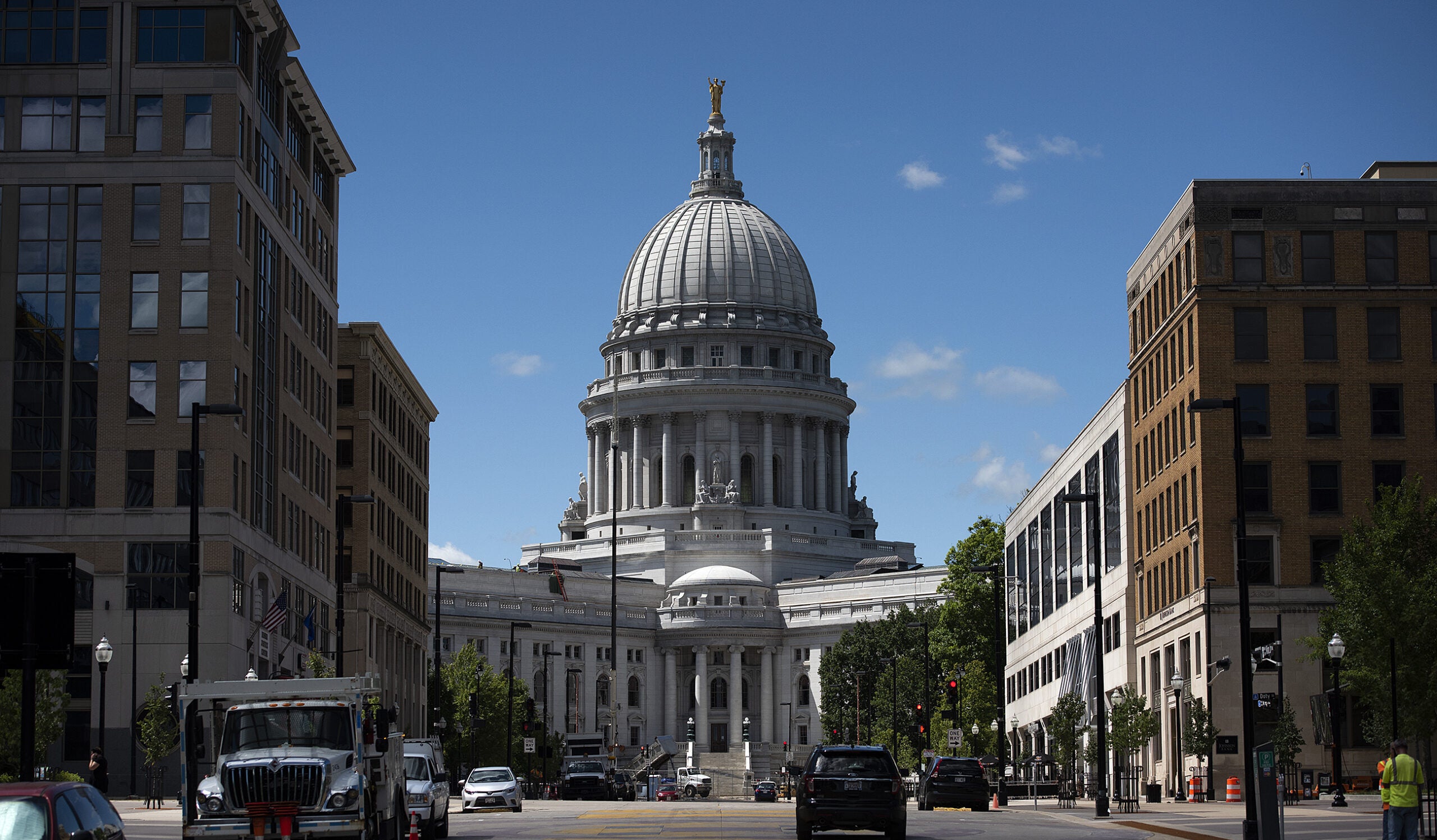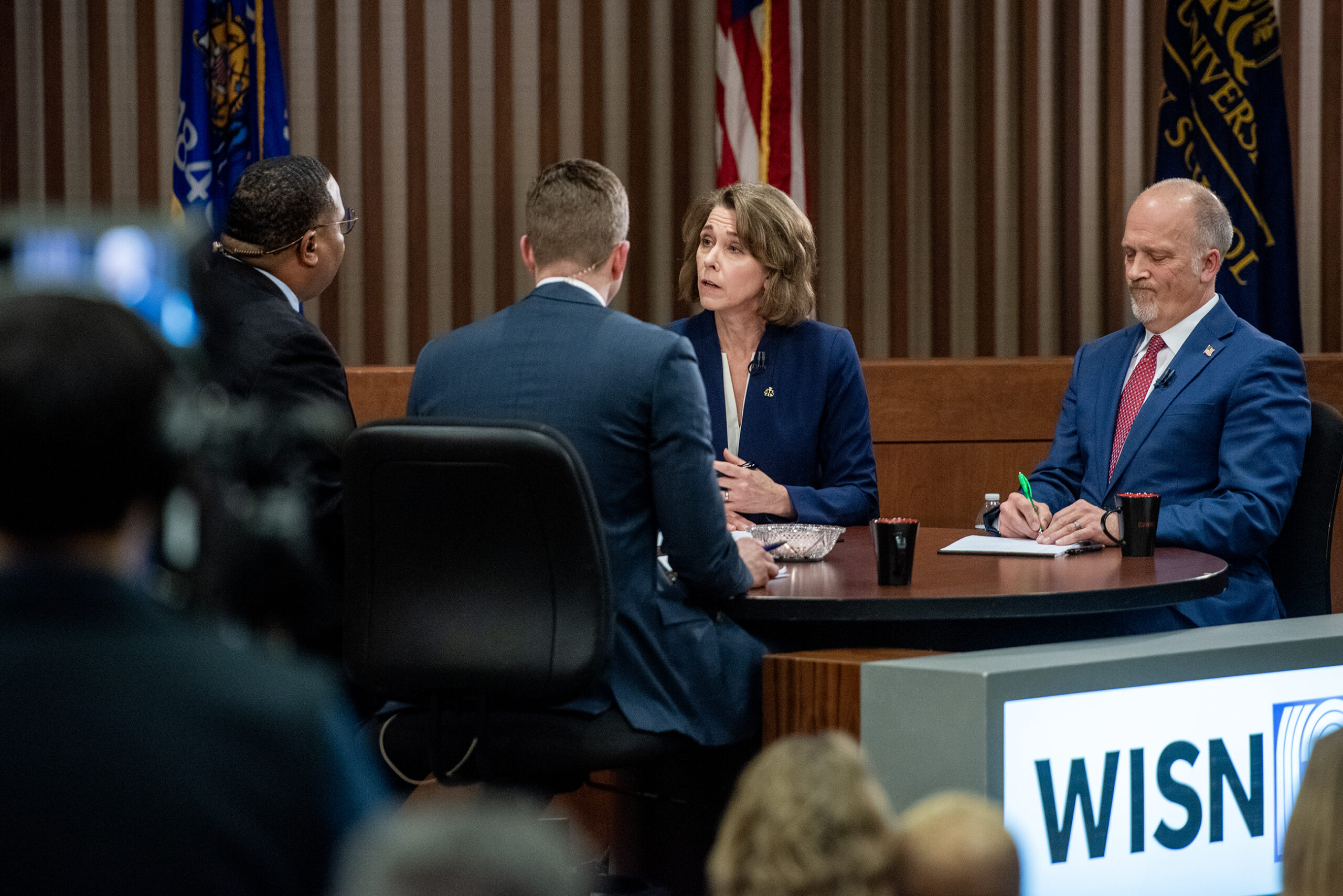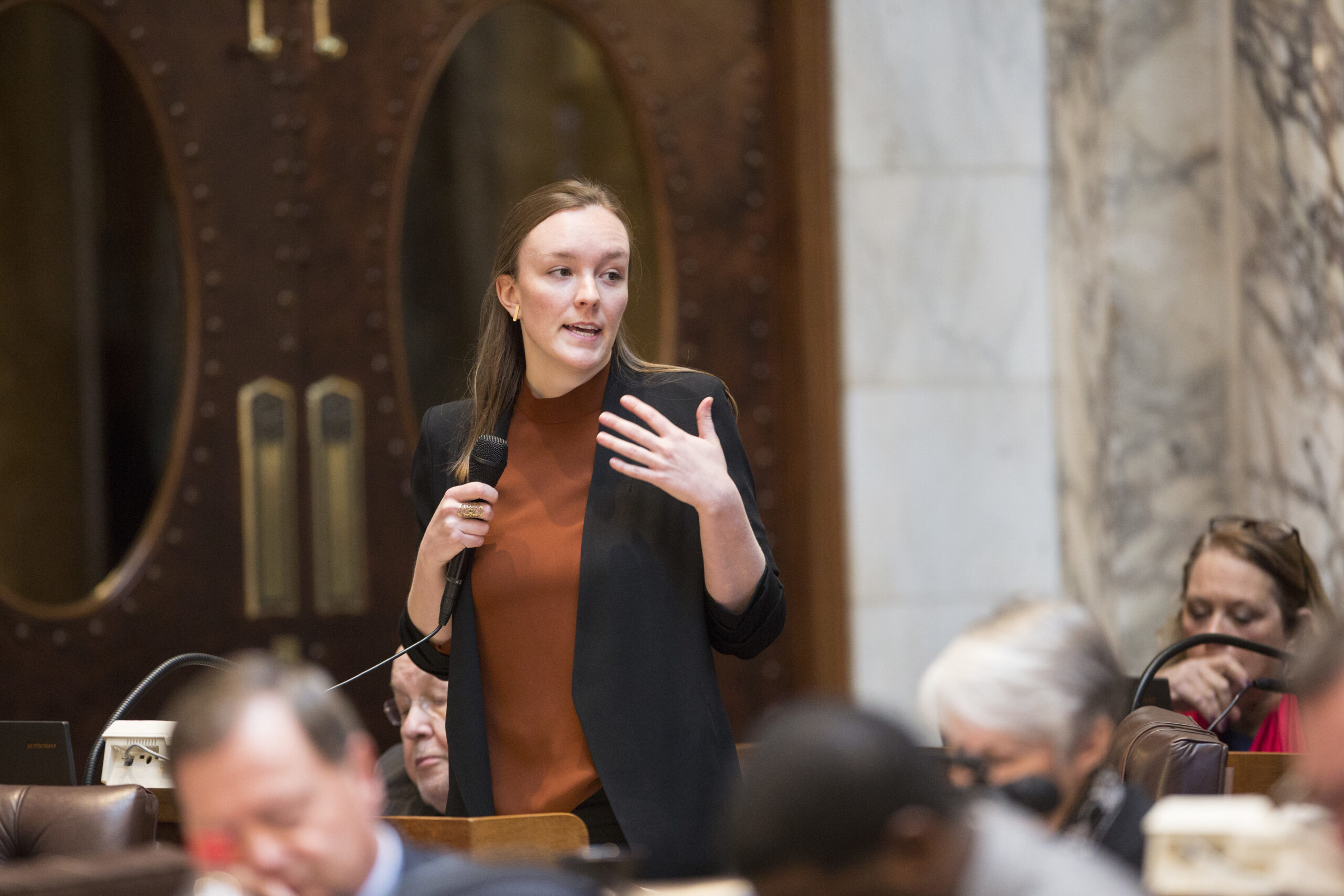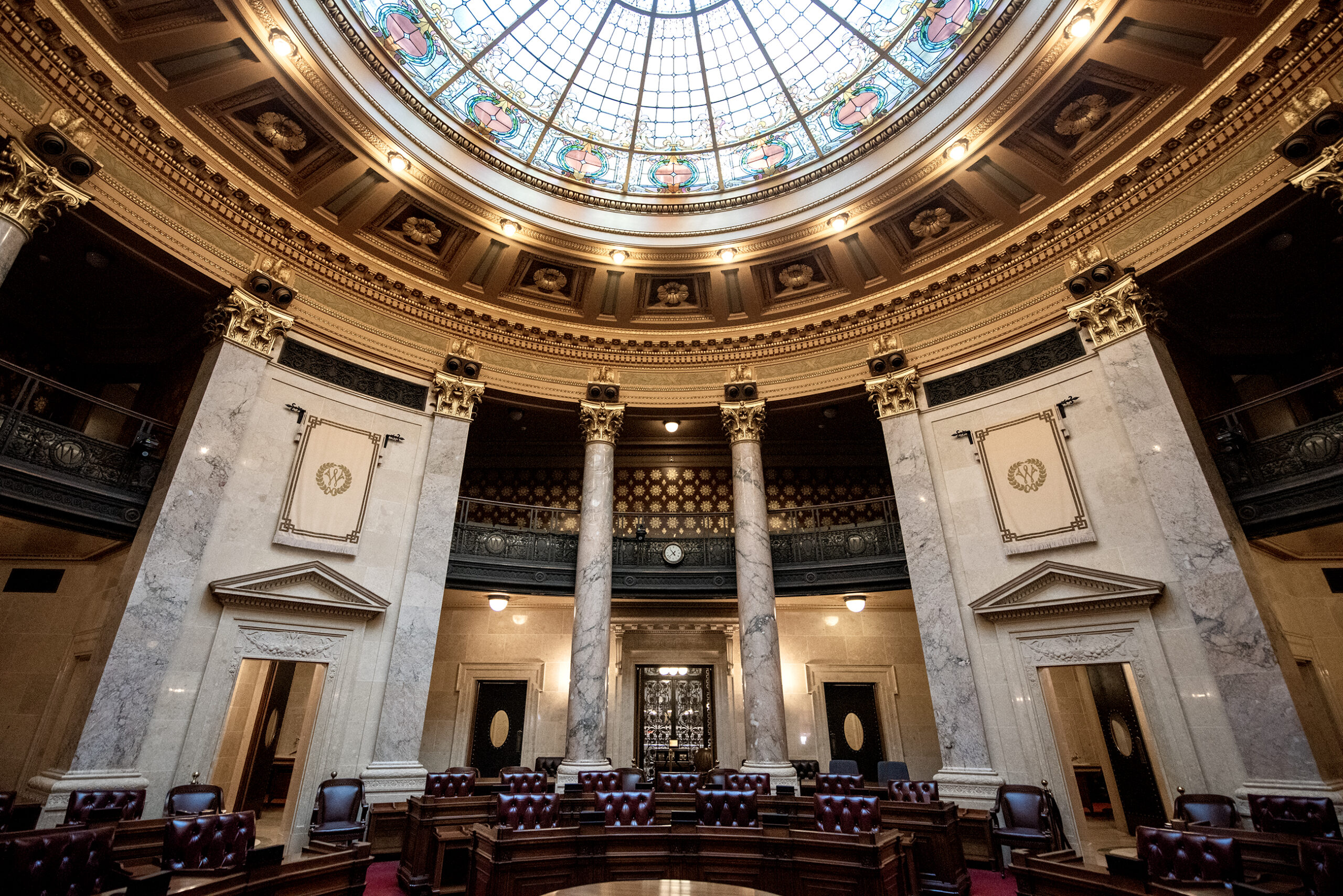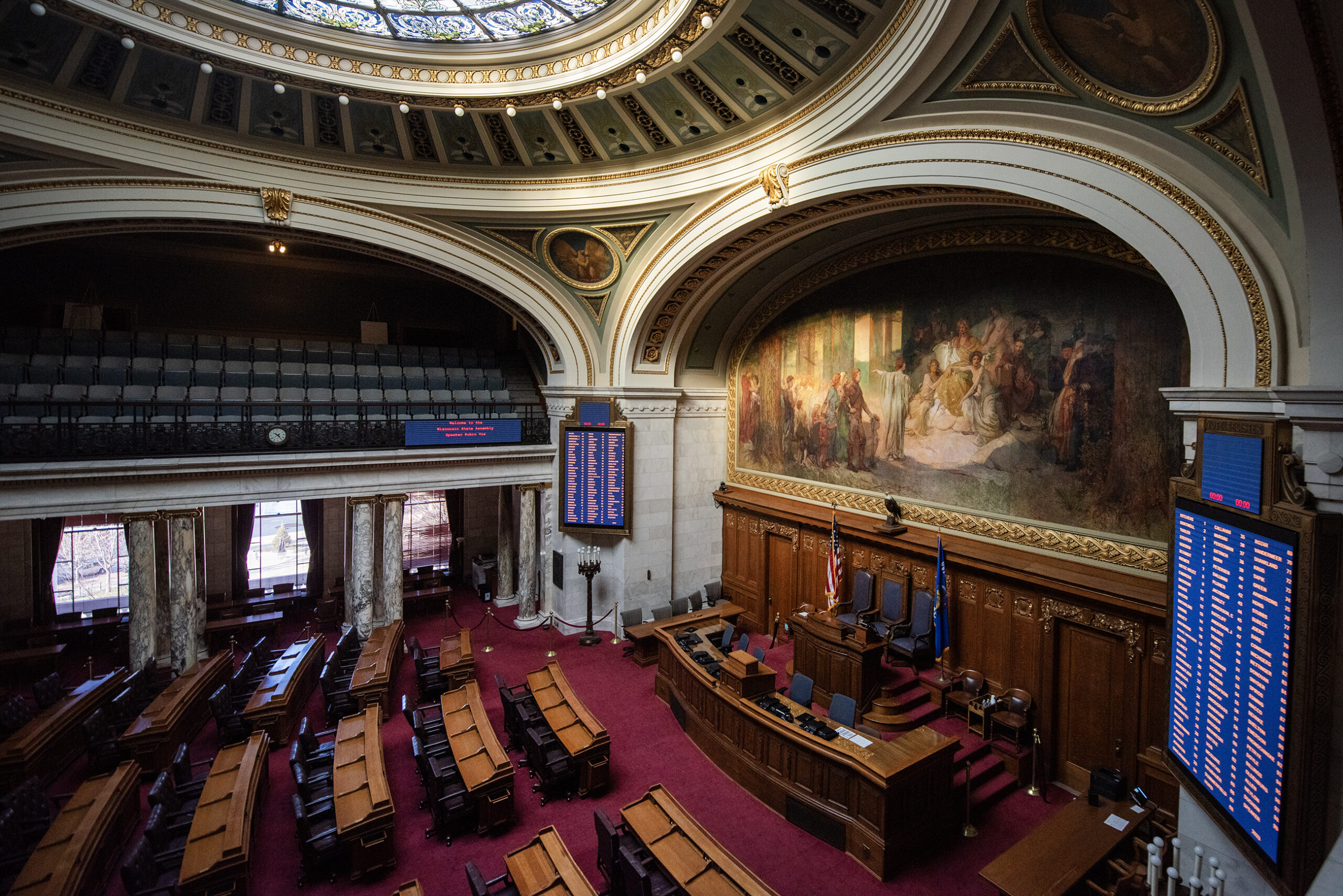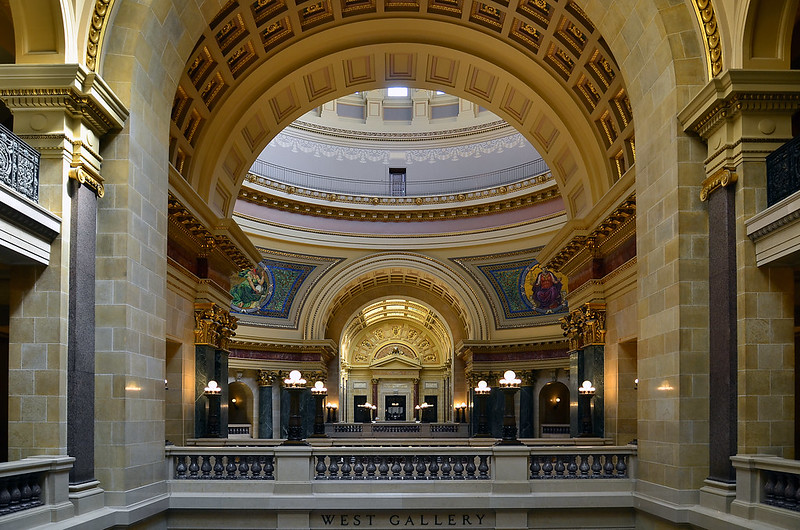This November will be Wisconsin voters’ first time casting general election ballots under the state’s new legislative maps, and both parties are gearing up for what might be the most expensive Assembly and Senate campaigns in state history.
Democrats say the new maps present an opportunity to gain a majority in the Legislature for the first time in over a decade, while Republicans fend off challenges in once-safe districts.
Both sides predict the most competitive seats could see over a million dollars spent per side, as financial support from national groups pours into the Badger State.
Stay informed on the latest news
Sign up for WPR’s email newsletter.
“There are competitive districts all across the state giving voters a choice this November,” said Assembly Democratic Minority Leader Greta Neubauer, D-Racine.
Currently, Republicans are just shy of a two-thirds supermajority in both houses of the state Legislature. They hold 64 of 99 seats in the state Assembly, and 22 of 33 seats in the state Senate. This November, every single Assembly seat and half of Senate seats will be on the ballot.
In their push to swing the balance of power, Democrats are running candidates in 97 of the Assembly’s 99 races and in each of the 16 open Senate races. They’d need to flip 15 Assembly seats and defend all their incumbents to win control of the chamber.
That challenge doesn’t faze Assembly Majority Leader Tyler August, R-Lake Geneva. He says Republicans expect to lose some seats, but he thinks Democrats are inflating their chances of winning in order to court donors.
“We know we’re going to be in the majority,” he said. “The Democrats are not going to take the majority, despite their millions and millions of dollars that they’re bringing in from out of state.
In fact, both parties are poised to spend heavily with the help of campaign finance laws, passed in 2015, that allow state parties and legislative campaign committees to accept unlimited funds and transfer those to state races. That deluge of funding is expected to target a handful of seats.
Neither party would disclose exactly how much they’re fundraising this cycle. At a WisPolitics luncheon in Madison in May, Neubauer said the party expected to spend more than a million dollars per competitive seat. August told WPR that he expects “our total spend will be competitive with that.”
“I’m sure it’s going to be the most expensive Assembly campaign cycle in history,” August added.
Democrats are targeting seats in areas where President Joe Biden won or lost his last election by two percentage points or fewer, according to Neubauer.
They’re also fighting to maintain two especially competitive western Wisconsin seats held by Democratic incumbents that both parties see as toss-ups.
The first, held by Rep. Steve Doyle, D-Onalaska, has historically been “as close as it gets,” said Neubauer. The other, held by Rep. Jodi Emerson, D-Eau Claire, was redrawn to make the seat “a potential pickup,” according to August.
The Doyle seat provides a window into the kind of spending that competitive races could invite, Neubauer said. In 2022 — when an Assembly majority was unimaginable for Democrats — they spent $1.2 million on his election.
“That is what it takes to compete in those really close, 50/50 seats, and we expect to see similar spending this year,” Neubauer said.
Democrats must play a longer game to shore up an advantage in the state Senate. Half of the chamber’s seats are up for election this year, and half will go up in 2026. This cycle, they’re targeting five seats, said Senate Minority Leader Dianne Hesselbein, D-Middleton.
Those were selected based on areas that both Biden and Gov. Tony Evers won, and are based in La Crosse, Green Bay, the Fox Cities, Sauk County and some northern Milwaukee suburbs, according to Hesselbein. The party says it will spend $7 million on television ads in those races alone.
Wisconsin in national spotlight
Two national groups that exist to support key state legislature races have Wisconsin on the mind this cycle.
The Democratic Legislative Campaign Committee, or DLCC, and the Republican State Leadership Committee, or RSLC, fundraise and campaign on behalf of their respective parties’ legislative candidates.
On Tuesday, the DLCC announced it was targeting 10 Assembly races and four Senate races in an effort to shift the balance of power in both chambers.
“Wisconsin represents one of the most exciting opportunities to shift the balance of power in the states this election,” said DLCC president Heather Williams in a statement.
And on Wednesday, RSLC announced a six-figure ad buy in three states, including Wisconsin, attacking Democrats’ records on immigration and education. Those ads are focused in three districts currently held by Republicans but which face sharp challenges under the new maps, in the southern and western suburbs of Milwaukee and in the Sheboygan area.
According to a press release announcing that campaign, the RSLC said it chose those districts based on an especially thin margin of victory in recent presidential elections.
“In Wisconsin, Republicans are vying for newly drawn districts, and securing these key Assembly seats will be pivotal in maintaining our legislative advantage,” the organization said.
Wisconsin Public Radio, © Copyright 2025, Board of Regents of the University of Wisconsin System and Wisconsin Educational Communications Board.
